Title: Surface modification of crystalline nanocellulose by optimization of the ultrasonication process 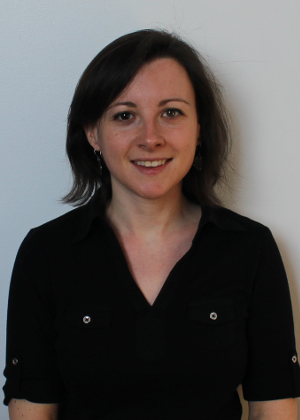
Start: May 2018
Topic:
- Numerical modeling and experimental validation of the ultrasonication process in order to optimize the dispersion of nanoparticles in suspension and create an operating window
- Modification of crystalline nanocellulose (CNC) to make it compatible with apolar matrices
- Integration of the CNC in an apolar matrix (to be defined) and characterization of the properties of the resulting nanocomposite
Codirection: Marie-Claude Heuzey (research director), Jason Tavares (co-director) and François Bertrand (co-director)
Email: melanie-1.girard@polymtl.ca
Title: Hydrodynamics of bubble column reactors in floating conditions
Start: September 2018
Topic:
Bubble column reactors have a broad application in chemical and petrochemical industries. Despite their growing application in offshore oil and gas industry, little attention has been devoted to analyzing the performance of such reactors installed onboard marine units.
Marine currents and waves influence hydrodynamics of reactors installed on floating offshore platforms. To maintain the capacity and product specifications in such reactors, prediction of their performance deviations with respect to the static ones is essential. Particularly, investigation on single bubble flow behaviour in a moving column will provide a basis to understand the more complex behaviour in multi-bubble flow in a bubble column reactor operating in floating conditions.
- Studying the hydrodynamics of single bubble rising in a laboratory-scaled bubble column installed on a hexapod ship motion simulator
- Developing a computational model to evaluate the effect of column’s motion on single bubble rising dynamics, to understand the liquid flow field around the bubble, and measure the forces acting on bubble, which governs different bubble rising behaviour in a moving column
Codirection: Faiçal Larachi from Laval University (research director) and François Bertrand (co-director)
Email: nasim.heydari.1@ulaval.ca
Title: Numerical modeling of fibrous filters composed of microfibers and nanofibers
Start: January 2021
Topic:
Fine particles in the air, also called aerosols, are harmful to human health and the environment. Aerosols are the cause of respiratory diseases and are also one of the causes of photochemical smog. Different strategies exist to capture these particles using fibrous filters. The most promising ones consist in using nano-fibers, but their prohibitive cost implies a parsimonious use of such fibers. They are therefore usually mixed with or deposited on larger fibers. The formulation of such mixtures is often still done by trial and error, but this approach does not guarantee the achievement of an optimal formulation. The numerical modeling approach to predicting the performance of fibrous filters has begun to be employed with some success for micron-sized fiber blends. However, the scales involved with the use of nano-fibers mean that the gas can no longer be considered as a continuous medium and classical fluid mechanics no longer holds. For this purpose, so-called Knudsen flows must be solved and a new numerical method adapted to such a type of flow must be developed in the context of complex porous media such as fibrous filters.
Codirection: François Bertrand (research director), David Vidal (co-director) and Sébastien Leclaire (co-director)
Email: jean-michel.tucny@polymtl.ca
Title: Design, scale-up and optimization of photobioreactor with the aid of advanced Computational Fluid Dynamics.
Start: September 2019
Topic:
His current researches focus on developing advanced physical and computational models for multiphase flow simulation and their application in the design, scale-up and optimization of multiphase reactors such as bubble column reactors, fluidized bed as well as photobioreactor for CO2 capture.
Codirection: Jamal Chaouki
Email: shuli.shu@polymtl.ca
Title: Real-time rheological measurements of high internal phase emulsions 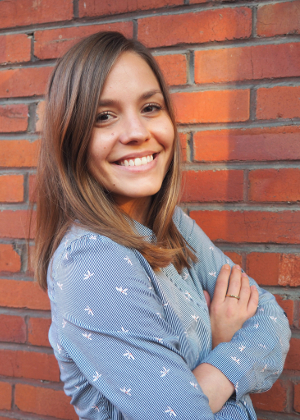
Start: August 2020
Topic:
High Internal Phase Emulsions (HIPE) exhibit a compact network of deformable droplets. The deformation of the droplets is at the origin of the particular rheological behavior of HIPE. These emulsions are described as viscoelastic fluids whose rheological parameters are related to the volume of the dispersed phase. The estimation of the rheological parameters of the emulsions is carried out with traditional measuring devices such as rheometers or by mathematical correlations post-emulsification. When a rheometer is used, there is a risk of destruction of the emulsions during the measurements. An error is then associated with the rheological results.
In this project, a mixing system capable of recording a rheological signal in real time will be developed. This signal, associated with the volume of dispersed phase, will thus make it possible to follow the evolution of the rheological behaviour of HIPE during the emulsification process. This signal will then be translated to obtain rheological properties similar to those obtained with conventional rheological measurement techniques. The proposed approach will allow not only to monitor the rheological properties but also to optimize the process parameters to the variable rheology of the fluid.
Codirection: -
Email: tiffany.bellanger@polymtl.ca
Title: Application of solid-stabilized interfaces to generate structures providing high sound absorption for Jet engine 
Start: August 2019
Topic:
Pickering High internal phase emulsion (HIPE) is a new generation of emulsions that stabilized by solid and offers opportunities to prepare multifunctional material. HIPEs' inherent tendency to retain the gel-like porous structure can be considered a promising technique for a controllable foam structure production with the desired morphology, which is applicable for sound absorption. Chemical parameters and processing conditions determine the porous material's morphology, which plays a crucial role in the sound absorption performance.
This project aims to define a new formulation for the sound absorber material based on the solid stabilized emulsion; Polyimide particles, as an approved substance for the jet engine application, stabilized this formulated emulsion. This technique eliminates the risk of exposure to the isocyanate, which is already used in Polyurethane-based foam production. It also provides a new approach for obtaining the desired morphology based on the formulation and processing conditions.
So, the specific objectives are:
- Determine the relationship between formulation and morphology to achieve the desired structure for sound absorption
- Determine the relationship between processing condition and morphology to achieve the desired structure for sound absorption
- Investigate the relationship between morphology, mechanical strength, and sound absorption coefficient
Codirection: Louis Fradette (research director) and Annie Ross (co-director)
Email: mina.saghaei@polymtl.ca
Title: Development of a holistic approach for the simulation of the powder bed additive manufacturing process 
Start: May 2021
Topic: Additive manufacturing (AM) processes enable the creation of parts with complex geometry or material distribution that may exceed the performance of conventionally manufactured parts while minimizing material loss. Among the AM processes for metal part, selective laser melting (SLM) represents approximately 80% of the equipment installed globally. However, it is difficult to predict the occurrence of manufacturing defects in a part, since they depend on a multitude of factors, both at the melt pool level (as is the case for the appearance of voids) and at the thermostructural level (as is the case for deformations and residual stress). Currently, there is no software that can simulate both mesoscopic phenomena (free surface flows, Marangoni effect, phase change) and macroscopic phenomena (stress and deformation) while allowing a parallel execution on a cluster. The development of a comprehensive and parallelizable simulation tool will thus allow the industry to be less dependent on trial and error testing and to take advantage of modern physical models and computing capabilities.
Codirection: -
Email: emile-1.bergeron@polymtl.ca
Title: Development of a physics-informed neural network to predict the reaction kinetics of vegetable oil trans-esterification into biodiesel 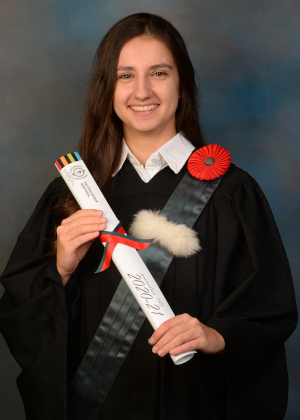
Start: September 2021
Topic: The kinetics of chemical reactions is not simple and remains very complex to model. Indeed, the rate constants describing the kinetics of reactions are difficult to calculate. Artificial intelligence applied in chemical engineering can be more than useful. Physics-informed neural networks could not only predict these kinetic constants by imposing a constraint on the respect of rate laws, but also improve the yield of a process by optimizing the operating conditions. In this project, the trans-esterification reaction of vegetable oils into biodiesel in a microwave reactor will be studied to better understand and explore this type of artificial intelligence.
Codirection: Bruno Blais (research director) et Daria C. Boffito (co-director)
Email: valerie.bibeau@polymtl.ca
Title: Modeling of non-Newtonian flows and application to chemical processes 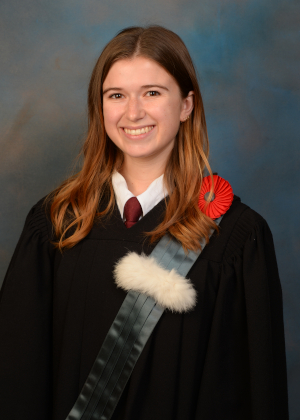
Start: Summer 2021
Topic: Non-Newtonian flows are characterized by the variability of the viscosity of a fluid as a function of the shear stress it undergoes. Several chemical industries handle fluids with non-Newtonian behavior, notably in the polymer industry, in the food industry and in the pharmaceutical industry, hence the importance of modeling their behavior in mixers, for example. The project aims at providing accurate methods in Lethe software for the simulation of non-Newtonian flows. The non-Newtonian methods will be applied to free surface flows (volume of fluid method).
Codirection: -
Title: Flow modelling in fixed-bed reactors by large eddy simulation
Start: Fall 2020
Topic:
To increase the efficiency and safety of equipment in the chemical industries, an interesting approach is the combination of unit operations through Process Intensification. Fixed bed tubular reactors (PBR) are a ubiquitous example, but these are difficult to characterize. By using Large-Eddy Simulation (LES) principles to model reactive flows, rather than the more common Navier-Stokes Averages (RANS) models, the intrinsic transient nature is better taken into account, which offers increased accuracy. The project aims to develop models and tools for the transient simulation of PBR reactive flows and a methodology for adapting meshes for this context.
Codirection: -
Title: Topological optimization of thermofluidic problems 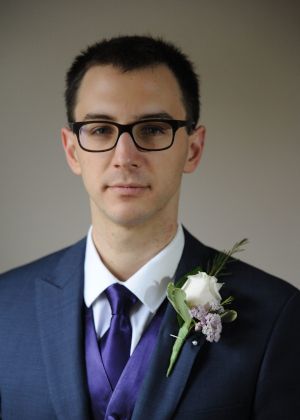
Start: August 31, 2020
Topic: Topological optimization is a very powerful tool, allowing the design of unprecedented and efficient shapes, which has not yet been applied to its full potential to the design of heat exchangers.
This project aims to establish a foundation in this problem that will allow other research to go further. An additional constraint of this project is that the designed models are 3D printable, which limits the number of acceptable results from an optimization.
Codirection: Bruno Blais (research director) and Charles Audet (co-director)
Email: paul-a.patience@polymtl.ca
Title: Numerical modeling of a microwave-assisted depolymerization reactor
Start: Fall 2020
Topic: Microwave assisted reactors are a relatively new technology and little is known about their optimal operating conditions. The aim of this project is to develop a numerical code in lethe, an open source solver built over deal.II, to simulate the different multiphysics coupled phenomena of fluid flow, heat and mass transfer, and electromagnetism that govern the operation of these reactors.
Codirection: -
Email: abbas.ballout@polymtl.ca
Title: Development of an immersed condition method for the analysis of virtual mass and drag forces for several particles
Start: Master's: September 2019 - M.Sc. to Ph.D.: September 2020
Topic: The project aims at developing a high order submerged condition method for the analysis of interaction forces (drag modification, lift and virtual mass force) between several particles in moderate Reynolds flows Re<1000. The flows are resolved with DNS.
Codirection: Bruno Blais (research director), Stéphane Étienne (co-director) and Cédric Béguin (co-director)
Email: lucka.barbeau@polymtl.ca
Title: Development of a high order finite element CFD-DEM for the modeling of fluidized and spouted beds
Start: August 2019
Topic:
The project aims at developing a high order CFD-DEM code in order to model solid-gas flows in fluidized and spouted beds comprised of large number of particles. The main objectives of the project are:
- The development of a coupling engine for high order CFD-DEM when a proposed particle projection method will be implemented for void fraction calculation
- The development of an implicit Large Eddy Simulations (ILES) for modeling turbulence in high order CFD-DEM which will allow for more realistic representation of the modelled systems
- Establishing a coarse graining approach for modeling large solid-gas systems applicable to high order CFD-DEM.
Codirection: -
Title: Develop a dynamic model for polystyrene pyrolysis in a microwave-assisted reactor 
Start: May 2019
Topic:
The project aims to develop a mathematical model to predict the impact of hydrodynamic behaviour in polystyrene pyrolysis using a microwave-assisted reactor.
The main objectives are as follows:
- The impact of operating condition on the hydrodynamics of viscous liquid and large solid particles in stirred-tank reactor by radioactive particle tracking method
- The impact of microwave field on the hydrodynamics of multiphase stirred-tank reactor by radioactive particle tracking method
- Develop a compartmental model based on hydrodynamics and microwave intensity data within the reactor
Codirection: Jamal Chaouki (research director) and Bruno Blais (co-director)
Title: Simulation of turbulent reacting flows using a Variational Multiscale method 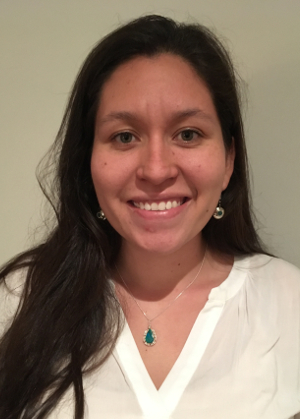
Start: May 2021
Topic:
The project aims to develop and evaluate a code in the CFD open-source software Lethe to model turbulent reacting flows using a mathematical framework known as Variational Multiscale (VMS) method. The main idea is to separate resolved and unresolved scales by projections into appropriate function spaces. These methods overcome the difficulties encountered with the standard Galerkin method and can be used in many engineering applications.
Codirection: -
Title: High-order CFD-DEM simulation and VOF type simulation
Start: September 2019
Topic:
- Development of a DEM and CFD-DEM coupling code in the framework of lethe
- Study of hydrodynamics and optimization of rotating packed beds using CFD simulations
Codirection: -
Email: shahab.golshan@polymtl.ca
Title: Modelling the temperature evolution during the mixing of bakery doughs 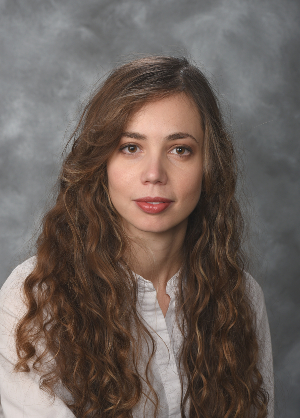
Start: August 20, 2020
Topic:
Making bakery dough requires mixing basic ingredients in large vats to create a dough that is then shaped and baked. During the mixing process, the ingredients bind together to change from powders and liquids to a thick, viscous dough. The temperature of the vat must be carefully controlled to maximize the action of the yeast. Current cooling systems have been designed through trial and error, and in fact the temperature may be too high locally, making the dough unfit for consumption. Large quantities of dough are thus thrown away due to a lack of precise understanding of the temperature distribution during mixing. The present project proposes to remedy this lack.
The very changing nature of the dough during mixing and the impossibility for the instrumentation to know the temperature inside the dough make it impossible to consider a purely experimental study. This project is based on the development of numerical simulations, coupled with verifications on certain precise temperature points on the surface of the tank, in order to respond to this industrial problem and thus avoid food losses.
Themes:
- Finite element fluid simulations
- Evolution of the thermal profile
- Free surface modeling
- Rheology of visco-elastic pastes
Diplomas:
- Engineer - école nationale supérieure d'Arts et Métiers (France)
- Master (MSc) specialization in Aerodynamics and Aeroacoustics
- PhD in Mechanical Engineering at Polytechnique Montreal, thesis title: "Development of numerical models of detuned bladed impellers in a non-linear context", lien : https://tel.archives-ouvertes.fr/tel-02888893
Codirection: -
Email: jeanne.joachim@polymtl.ca
Title: Development of a 3D code for the numerical simulation of high voltage circuit breakers using the immersed boundary method.
Start: Summer 2021
Topic: High voltage circuit breakers are used in large electrical networks to stop the current in case of malfunction. To reduce the cost of prototyping and testing during the design phase, numerical simulations are used. However, the complex geometry of circuit breakers and the presence of moving objects make the task of generating and managing meshes very difficult. The Immersed Boundary Method (IBM) simplifies the generation of meshes. Indeed, with the IBM method, the geometry is immersed in a Cartesian mesh. The overlay mesh approach allows for the proper handling of moving objects during the simulation.
The objective of the master's project is therefore to develop a 3D code based on the IBM method and overlay meshes capable of efficiently simulating high voltage circuit breakers.
Codirection: Jean-Yves Trépanier (research director) and Sébastien Leclaire (co-director)
Title: Microscopic modeling of the decomposition phenomena of thermal protection systems using lattice Boltzmann method
Start: Fall 2018
Topic: During the hypersonic re-entry of space vehicles to Earth, they are subject to strong friction with the surrounding atmosphere, which generates a high thermal energy. To guarantee the integrity of the vehicle, heat shields are installed on the entire vehicle and dissipate this energy through physico-chemical phenomena leading to its ablation, including pyrolysis, oxidation, and mechanical erosion. The micro-porous structure of these heat shields coupled with the rarefied nature of atmospheric gases at high altitude does not allow the study of gas flows through them according to hydrodynamic equations.
Lattice Boltzmann method (LBM) has shown in the past its efficiency in modeling multi-physical problems with complex structures as well as its ability to simulate flows in rarefied regime, while offering a reduced calculation cost thanks to its easy parallelizability. The project will focus in particular on the modeling of pyrolysis in rarefied regime with a LBM model taking into account the thermal, reactive and multi-component considerations existing in the ablation phenomenon.
Codirection: Jean-Yves Trépanier (research director), Marcelo Reggio (co-director) and Sébastien Leclaire (co-director)
Email: michel.ho@polymtl.ca
Title: Efficient Data Structures for Simulating Fluids in Large Systems with the Lattice Boltzmann Method. 
Start: May 2019
Topic:
The main objective of the project is to improve upon the current LBM (Lattice Boltzmann Method) algorithms and create one that will work efficiently with distributed memory systems as well as with single processor CPU and accelerators.
The three items below are related sub-objectives:
- Objective 1: Introduce a new data structure to increase data locality and eliminate data dependency in LBM algorithms
- Objective 2: Develop an efficient load balancing technique for LBM which, besides distributing computational load among processes, minimizes the amount of inter-processor communication
- Objective 3: Design a new algorithm for LBM in such a way that, at the programming level, it would be possible to hide the parallel programming layer of the code.
In Objective 1, the performance of the code on a single processor will be increased, but more importantly the algorithm will be ready for parallel programming (i.e. multi threads and GPU accelerators). However, this is not enough for simulating large scale systems with the LBM and we need to execute the code on multi-core and multi-GPU computers. So, Objective 2 helps by having an efficient code, executable on distributed memory computers. In addition, Objective 3 paves the way for using any parallel programming paradigm with little extra effort from the developers.
Codirection: -
Email: morteza.namvar@polymtl.ca
Title: Simulation of Turbulent multiphase flow with Lattice Boltzmann Method
Start: January 2020
Topic:
The objective of this thesis is to answer some questions about multiphase turbulent flows which have several applications in industry and everyday life. The chosen method will be the lattice Boltzmann method. C++, Matlab, Python and Array Fire will be used.
Codirection: -
Email: elham.satari@polymtl.ca
Title: Development of a 3-D numerical solver for icing on aircraft wings using Lattice Boltzmann method
Start: Winter 2021
Topic: Ice accretion affects the external surfaces of an aircraft, called airframe icing, or the engine. These conditions have resulted in fatal accidents in the past in aviation industry. The aim of the present work is to simulate the conditions resulting in icing on the aircraft, especially airframe icing, using lattice-Boltzmann Method and to look for the extent to which these can affect the functioning of the aircraft. Finally, to look for feasible solutions to prevent the ice accretion on the wings and the engine.
Codirection: Jean-Yves trépanier (research director) and Sébastien Leclaire (co-director)
Email: md-sujaat.ali@polymtl.ca
Title: Investigation of Unsteady Aerodynamics of Highly Manoeuvring Objects 
Start: Winter 2021
Topic: The main objective of this study is to integrate Lattice Boltzmann Method “LBM” with the immersed boundary method “IBM” to solve the unsteady flow around a highly maneuvering objects such as a multi-wing jets with vertical takeoff and landing.
Codirection: Sébastien Leclaire (research director) and Ricardo Camarero (co-director)
Email: abdallah.sherbiny@polymtl.ca
Title: Numerical modeling of fibrous filters composed of microfibers and nanofibers
Start: January 2021
Topic:
Fine particles in the air, also called aerosols, are harmful to human health and the environment. Aerosols are the cause of respiratory diseases and are also one of the causes of photochemical smog. Different strategies exist to capture these particles using fibrous filters. The most promising ones consist in using nano-fibers, but their prohibitive cost implies a parsimonious use of such fibers. They are therefore usually mixed with or deposited on larger fibers. The formulation of such mixtures is often still done by trial and error, but this approach does not guarantee the achievement of an optimal formulation. The numerical modeling approach to predicting the performance of fibrous filters has begun to be employed with some success for micron-sized fiber blends. However, the scales involved with the use of nano-fibers mean that the gas can no longer be considered as a continuous medium and classical fluid mechanics no longer holds. For this purpose, so-called Knudsen flows must be solved and a new numerical method adapted to such a type of flow must be developed in the context of complex porous media such as fibrous filters.
Codirection: François Bertrand (research director), David Vidal (co-director) and Sébastien Leclaire (co-director)
Email: jean-michel.tucny@polymtl.ca
Title: Numerical modeling of fibrous filters composed of microfibers and nanofibers
Start: January 2021
Topic:
Fine particles in the air, also called aerosols, are harmful to human health and the environment. Aerosols are the cause of respiratory diseases and are also one of the causes of photochemical smog. Different strategies exist to capture these particles using fibrous filters. The most promising ones consist in using nano-fibers, but their prohibitive cost implies a parsimonious use of such fibers. They are therefore usually mixed with or deposited on larger fibers. The formulation of such mixtures is often still done by trial and error, but this approach does not guarantee the achievement of an optimal formulation. The numerical modeling approach to predicting the performance of fibrous filters has begun to be employed with some success for micron-sized fiber blends. However, the scales involved with the use of nano-fibers mean that the gas can no longer be considered as a continuous medium and classical fluid mechanics no longer holds. For this purpose, so-called Knudsen flows must be solved and a new numerical method adapted to such a type of flow must be developed in the context of complex porous media such as fibrous filters.
Codirection: François Bertrand (research director), David Vidal (co-director) and Sébastien Leclaire (co-director)
Email: jean-michel.tucny@polymtl.ca




